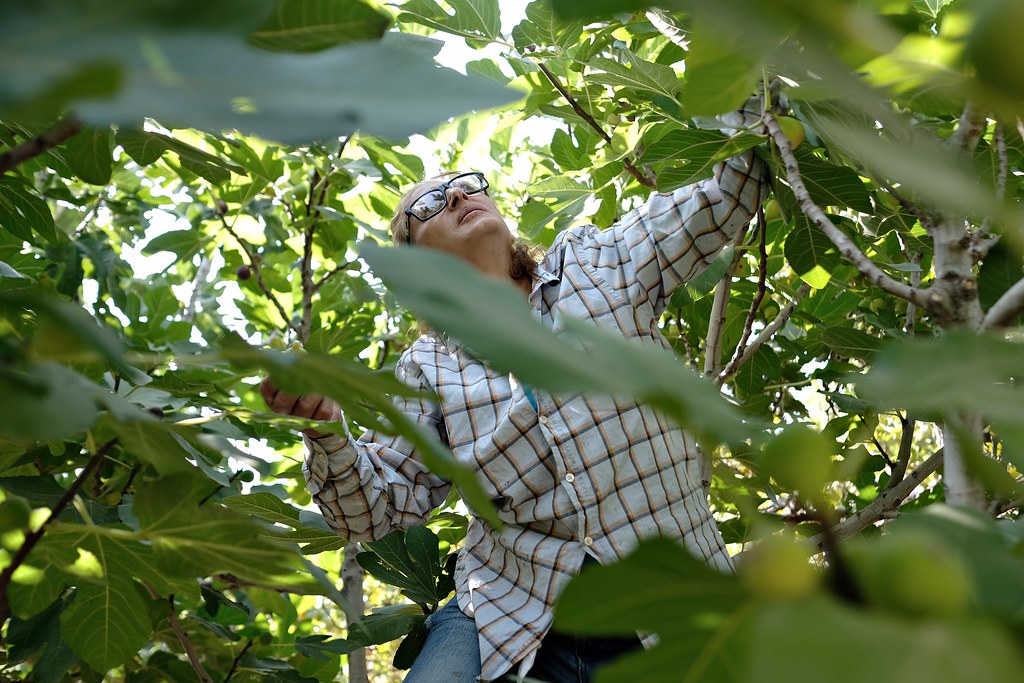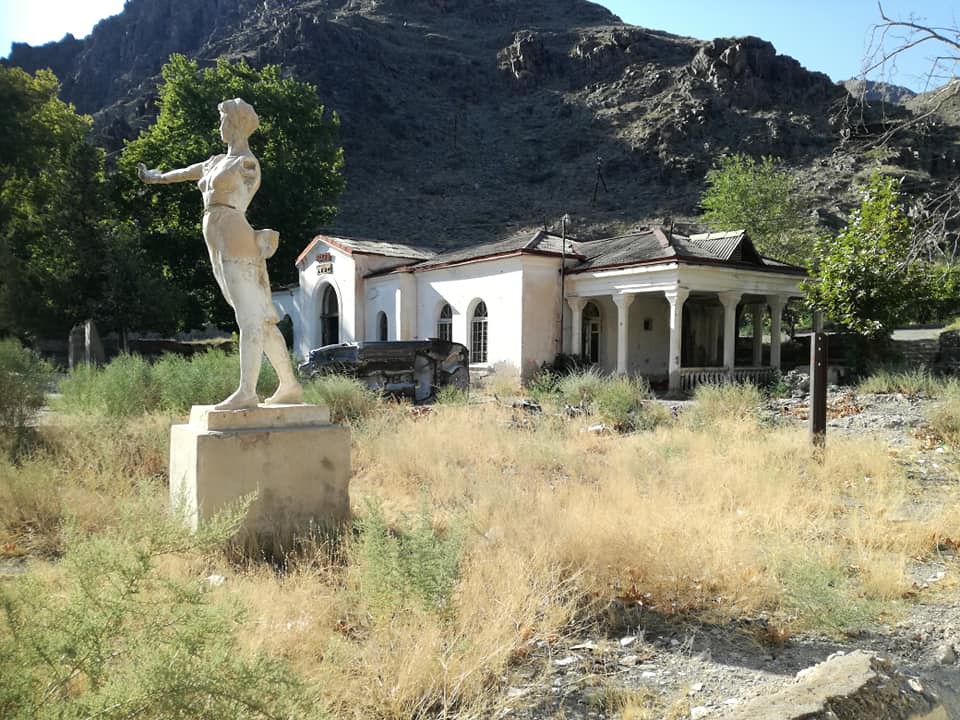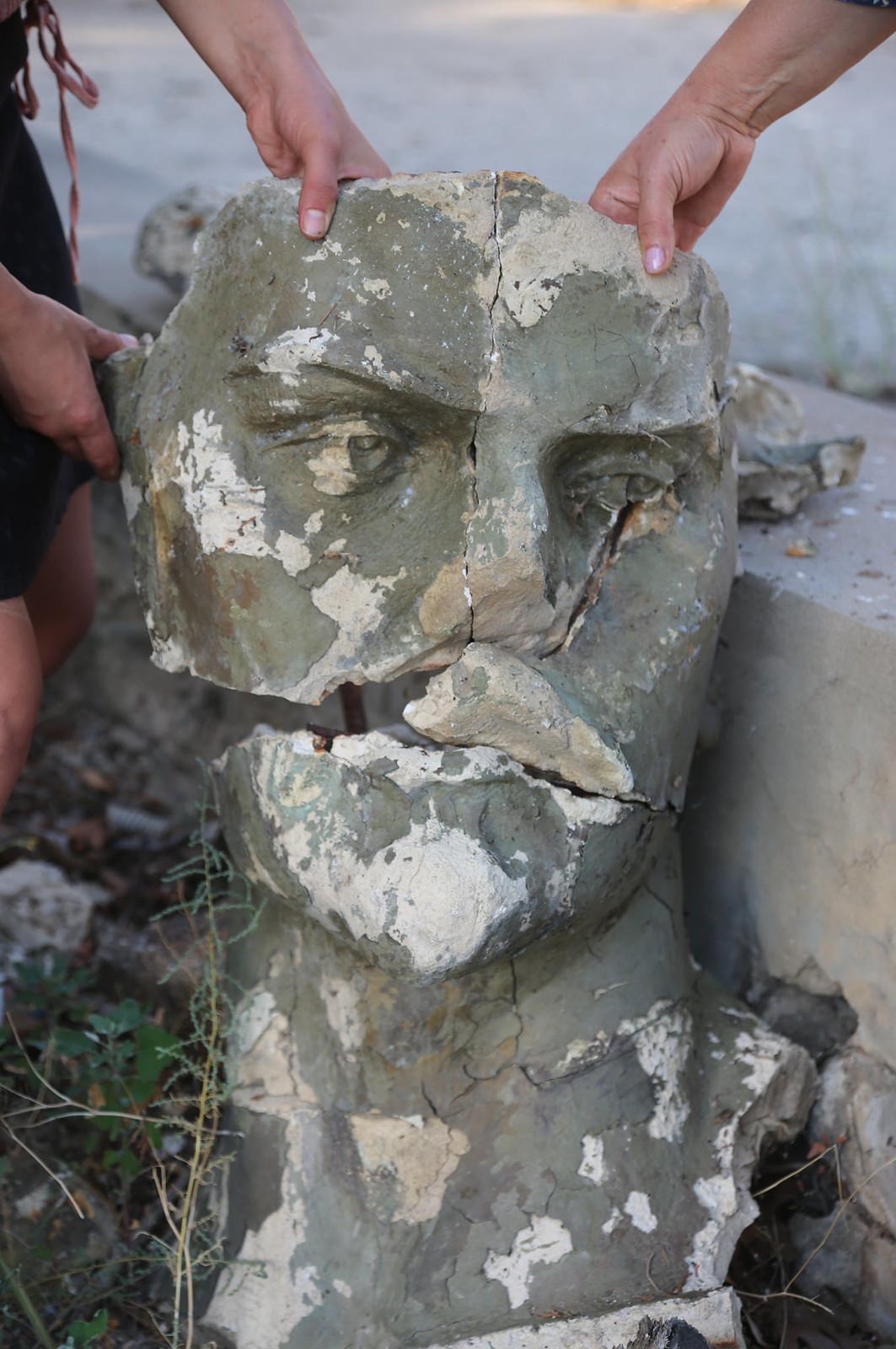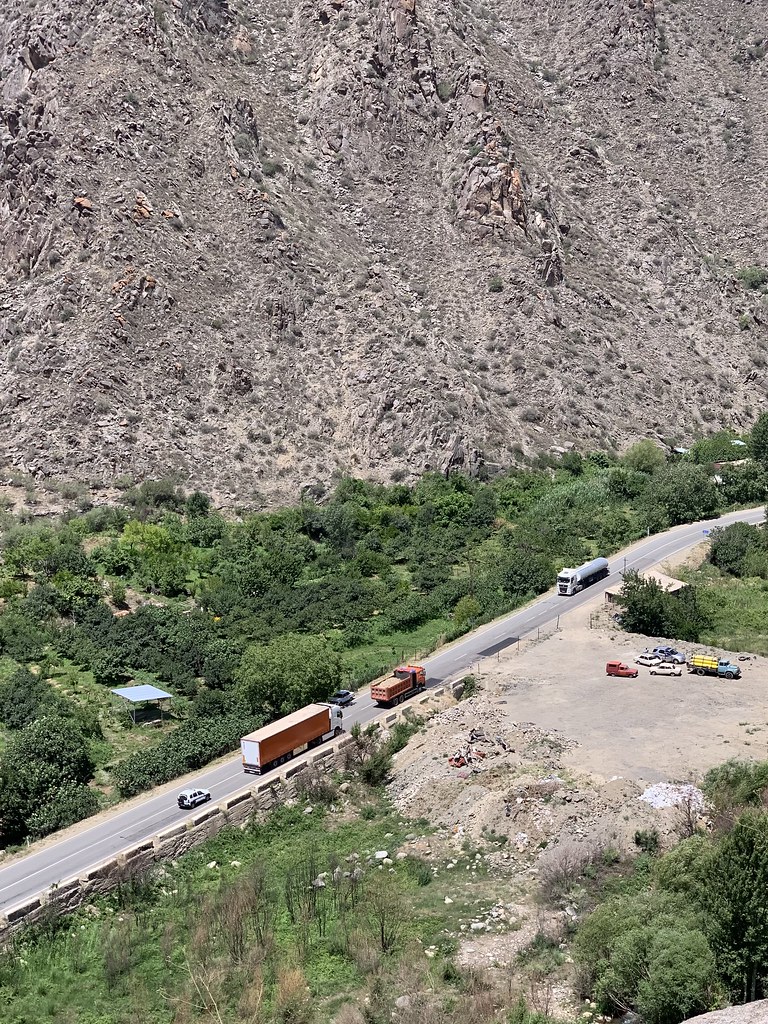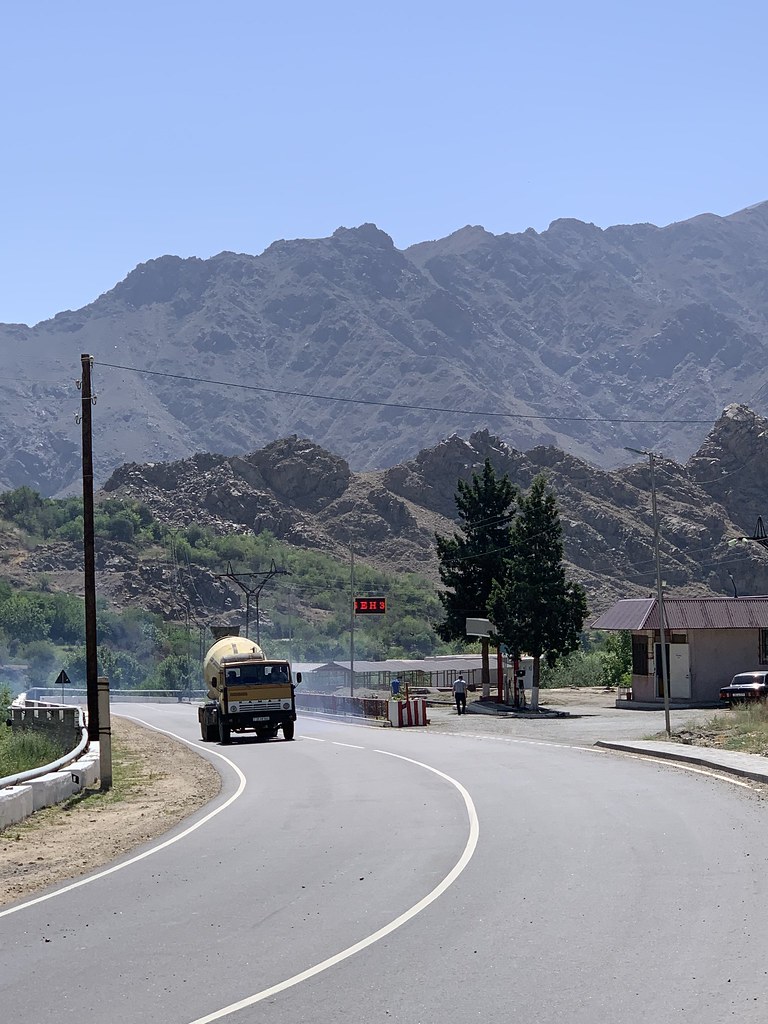Everybody was coming to terms with the pandemic and the Second Karabakh war hadn’t started yet. August, 2020․ It was impossible to leave the country․ For summer holidays, me and my friend decided to go as far as possible, to the most southern town in Armenia- Meghri. The road was long. We decided to make a night stop halfway in Goris, the center of the Syunik region.
The city is in the valley, when you drive down into it, first thing you see is the red roofs. This is not an aesthetic choice. The locals used the leftover painting material of the micromachine factory when it stopped operating along with the collapse of the Soviet Union.
The new authorities of the city were now trying to develop tourism here. The city government was selling out the public lands for hotel development pitches. The roads near gift shops were first to get reconstruction funds. Even levying a tourism tax was being considered.
South of Goris, the touristic Armenia ends and starts, as the southerners believe, the most beautiful nature. The mountains are getting higher, the green is getting darker, the colors of the rocks are getting denser.
We reach Kapan and get into the only public transport to Meghri – the courier Armen’s car. Armen tells scientific news on the way. He says that there is a city in the USA where cars go through the air, another city where the colors of the sky change. On Mondays, the sky is yellow, on Tuesdays- it’s pink, etc. Armen hopes that the high tech will come to Armenia. Before that happens, he sent his son to America to live in colorful cities.
As we drive by Kajaran town, Armen says that the Velvet Revolution will be a real, if the mine here is nationalized. And at that time, no one in Kapan, no one in Armenia will have to work, the copper and molybdenum mine is so rich that its content will pay off allexpenses of 3 million Armenians.
— That is a very difficult question. Can he nationalize it? But if he can, then well done Nikol [Pashinyan]! If this combine is nationalized, if people don’t work, this combine will take care of the people.
Another passenger from Kapan doesn’t like this idea. He says that not working makes a person dull. People of Kapan should work on a regular basis and with low salary, they like working, not the income. If you don’t work, you will get old soon.
The copper and molybdenum mine in Kajaran is the biggest worksite in this area. It affects everything else in towns of Kapan and Кajaran. For instance, real estate prices are as high as in the capital city of Yerevan. To afford a house in Kapan, one must be a miner. Those who choose other professions, have to leave the town. The Mine also affects family life. Men work in the mine, exploiting their health, and their wives spend the money to buy vitamins for their husbands.
I also learned about environmental issues. Ghazaryan, a green activist and economist, met in his yard in Kapan. His NGO hosts hikers around the globe, who stop here to see remains of the silk road.
— A doctor from Yerevan then finds women with breast cancer coming from Kapan, Kajaran or elsewhere. A better analysis should consider other characteristics of Kapan. For example, there are more reasons for depression. No prospects… Ejmiatsin, Hoktemberyan, Hrazdan and Abovyan have passed. Before, Kapan was the 4th city of Armenia, now it is the 8th. They have passed because they are very close to Yerevan. But the landscape of Kapan is more interesting.
Armen stops in Kajaran, the richest town in Armenia that looks desperately poor. One passenger finger-points to an ugly pavement and DIY fences and says “isn’t it a shame? So many tourists come and see this dirt”.
Further on the road, the car reaches alpian heights, 2500 meters from the sea level. The highway then gets us down to 500 meters above the sea level – the lowest place of Armenia. And here, we have finally arrived at our destination – Meghri.
We were dropped on the sidewalk of the interstate road, which is also the main road in Meghri. The road looks scary not because of fast cars, but because of trucks transporting liquid gas from Iran. A cloud of dust stands in the air when they pass. One can wonder if the town is dirty from the explosions in the gold mines or if it’s just windy.
We rush out to the pavement. To go anywhere, one needs to climb. Meghri is like a bowl, and the houses are scattered on the walls of that bowl. It looks like panopticon. Every balcony sees the yards of the neighbors on the opposite hill. You can’t keep anything private.
In Armenia, people are only discovering the uniqueness and sell-ability of their home towns and villages. Jermukists are proud of their mineral water, everyone is a skier in Tsaghkadzor, and a poet in Stepanavan.
In Meghri, people don’t have to sell their town. It’s number one already. But they are proud of their fruits, figs, pomegranate, and persimmon. Here is some vox pop I did in downtown Meghri, where people talk about their town.
— This is a great place. Let me tell you this: the fruit is amazing here; sweet and delicious. I give you 100 percent guarantee; you can’t find such fruit anywhere else in Armenia.
***
— All these mountains accumulate the sun heat during the day, and they give the heat to the fruit during the night. So the plants are constantly kept warm, that’s why the fruit is extraordinarily sweet here.
***
— People in Meghri are very hospitable. They are as sweet as their fruits. I give fruits to all the tourists, even Russians, who come here to see the pyramids. Then they leave and send me photos and their thanks.
Our August visit coincided with the closure of the border with Iran, because of Covid, which was dire for Meghrians. Logistically, it’s the shortest way out. Before the collapse of the Soviet Union and the Karabakh war, Meghri had a railroad connection to Yerevan, which took a three hour picturesque journey through Nakhijevan – an autonomous republic within Azerbaijan in the west. The tunnel and the rails fell victim to the war, too.
As a result, Meghri is stuck and the only way to get to the capital is a 9 hour car drive through a zigzag up the mountain road, built by the last Soviet Armenian leader – Karen Demirchian. Needless to say, that is what we took to get here.
Having the Iran getaway was a solace, now that it is gone because of Covid, everyone feels claustrophobic… And nostalgia for the trains kicks in.
— We used to get on the train at 12 o’clock in the evening, lay down and sleep. At 7 o’clock in the morning we were already in Yerevan.
— Do you remember the parties [for boys going to the army]? Playing music and sending them off to Yerevan by the train at night.
— These small rooms were the ticket offices, in one of the rooms, if necessary, people used to spend the night, and in the other room put their things
— Was there a statue here?
— Oh, the statue is gone. Shahumyan’s statue was here. Where is it? I don’t know who removed it. He was standing very proudly. Maybe it has fallen inside? We can collect part by part.
— That train was something else. The abundance of boxes! That train made it possible to deliver everything to all your relatives.
— It’s an 8-10 hour journey from Yerevan, it’s clear that everything becomes more expensive due to the cost of the journey. That’s why I say that we should take Nakhijevan to make it cheaper (laughs).
— Those coming from Iran, let the cars stop here and empty some things. They go to Yerevan, then come back, the cost is doubled.
***
— We are waiting with great hope for the construction of the North-South highway, which will give an impetus to fruit growing in Meghri. The road will facilitate exports and increase exports. Of course, when there is realization, there is also production. The market determines the supply-demand relationship.
— There used to be a dryer here. We were handing over figs, they were taking every kind of fig. Now they take only the big ones. Except for the dryer… life was much happier before.
They are also cut off from the world due to the centralization of local authorities. Also with health issues. People living in Kapan and Meghri often have to go to Yerevan. There is a typical hospital, but there are no narrow specialists there.
— Gas goes to Yerevan through Meghri, but Meghri does not have gas. They are installing it now.
One year later, I returned to Meghri. A year from my first trip, and incidentally 10 months from the Second Karabakh war that happened in Autumn in 2020. The Nagorno-Karabakh conflict, which was frozen for about 30 years, just turned into a large-scale war. This conflict dates back to the 1990s, when the ethnically Armenian region of Nagorno-Karabakh proclaimed independence from Azerbaijan, which never recognized it and eventually claimed it back with military force. The conflict has affected the communications of Meghri for 30 years. And now it hurts again, killing about 4000 Armenian soldiers, at least 20 of them from Meghri. The photos of the fallen soldiers are turned into huge graffitis, and are now part of the city landscape.
Nostalgic Stories of happy days were not there. People were unwilling to chat or were monosyllabic. Maybe I was also reluctant to do vox pop. It just didn’t feel right this time.
There are policy changes. The EU is funding a road, which will shorten the ride to Yerevan by some 80 kilometers, and will be a fast ride road through tunnels and flat terrain. The Armenian government did not nationalize the mine, but it significantly highered the taxes on mine exploiters by 15 percent. Some of the raised funds will be allotted directly to local communities. Iranian border is now open for passengers. There is even some hope that the railroad will function again.
So much good news, but there is no euphoria down in the south. The 44-day war shocked the country, killed its thousands of citizens, traumatized and handicapped so many more people and families. Now, the talk about communications roads and railroads are part of the post-war political discourse, possible peace deal or possible new war.
Some politicians think that watching a horrible war live on smartphone apps and youtube, has a positive side effect; it reminds people about the human cost of war. Some people think seeing the horror of war makes people want the Peace. In reality, seeing the war doesn’t bring compassion for the Other, it doesn’t even bring a wish for revenge. Seeing the worst makes people get accustomed to it, it raises limits of tolerance to cruelty, and cuts down our expectations from politics.
If we were against the oligarchic economy, now, we can take it, if the oligarch is Armenian. If we wanted fair working conditions, now having a job is satisfactory enough. If we wanted to travel across borders, now the freedom of travel would be for goods only.
— If you think about the idea, it’s very good that the roads will be open. But the real question is can we take advantage of that?
***
— Security problem occurs here. If they provide that security… I highly doubt it. We are not safe, it is not safe. Every day there is a shooting, every day there is a problem. I won’t say that I am completely faithless or completely hopeless. I always try to be optimistic. I’m just broken. Me and, it seems, many, everybody.
— Nowadays tension is worse than our past life. Covid or something else… You don’t know whether it’s true or not, whether we are living the right life or the wrong life.
***
— Everyone wishes for peace. But we can’t tell how it will be solved. The elders of us deal with these issues. I think it will be good. What can I say.
Knar Khudoyan, Ani Tadevosyan
Photos by @Mr__upsidedown, Eliza Mkhitaryan and Monte Hovhannisyan. Thanks to William Hollister, Constant Leon, Monte Hovhannisyan, and Britt Jenson for their support.
The report is the fourth part of the “Border Stories” series. The first was “Escape to Nature“, the second “The room of Anger“, the third “Borderland. Militarized Berd after the war“.
 Epress.am News from Armenia
Epress.am News from Armenia


